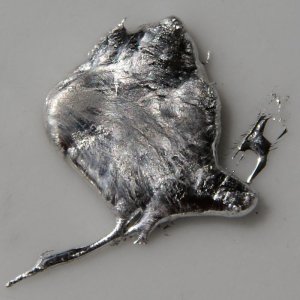
See-through Metal
A new type of electrically conductive and transparent metal has been developed by US researchers that is significantly cheaper than the cost that it takes to make today’s smartphone displays.
Current screens are based on indium tin oxide (ITO). And over the past 10 years, the cost of ITO has varied. It went from $200/kg to $1000/kg. Now, it has settled at its current price of $750/kg. Ultimately, this means that phones (and other devices that require the material) are rather high in price and vary greatly based on the whims of the market. Ultimately, this is because ITO contributes to the about 40 percent of the production cost of a smartphone or tablet. The rest of the price can be attributed to the cost of memory chips and processors, the latter of which has continued to drop.

To that end, scientists from the Pennsylvania State University began working on an alternative to ITO that can potentially match the optical transparency, electrical conductivity, and efficiency that traditional materials in use provide.
“We are trying to make metals transparent by changing the effective mass of their electrons,” said lead engineer Roman Engel-Herbert in the release. “We are doing this by choosing materials in which the electrostatic interaction between negatively charged electrons is very large compared to their kinetic energy. As a result of this strong electron correlation effect, electrons ‘feel’ each other and behave like a liquid rather than a gas of non-interacting particles…When you shine light on it, it becomes less reflective, thus much more transparent.”
Transparency
Compared to the cost of ITO, this new discovery can produce metals such as strontium vanadate and calcium vanadate for a fraction of the cost. This is because these metals are significantly more available and are abundantly distributed in the Earth’s crust.
Vanadium reportedly only sells for a shocking $25/kg and strontium for even less.
The scientists believe there is no reasons that their new process and metals can’t replace ITO for smartphone production. Now, the question is only how to apply and implement these new processes and materials into a large-scale manufacturing process.
The scientists have also already applied a patent for their technology, which could, beyond being used for smartphone production, also be used to create cheaper solar cells.